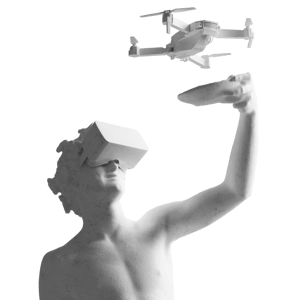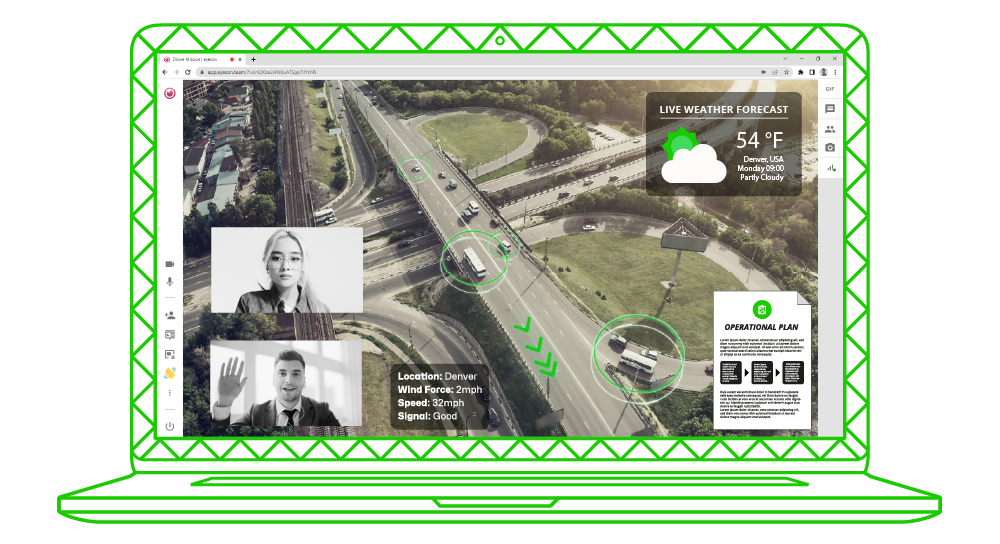Lessons Learned
Video meetings with drones
Eyeson offers fully integrated video calling to create fluid online experiences with drones and people.
Challenge
Situational awareness with live drone footage
The main difference between a person in a video meeting and a drone is that the person does not really move. A drone on the other hand requires the video to change drastically from frame to frame.
Modern video compression can assist in creating a video experience which is helpful with situation assessment.
Video quality is a key factor for observation and orientation so the situation is assessed right. But that is not all. On the list for a successful drone video call should also be low latency and metadata. Both are key for live assessment.
Video Meetings & Drones
Video Requirements for situational awareness
1
Fluid Video
2
Low Latency
3
Add Metadata
Solution
Where others fail
Eyeson's ability to handle numerous video feeds simultaneously sets it apart from other video platforms. By creating a composite video canvas view and sending a single video stream frame by frame to each client, the required bandwidth and processor demands are greatly reduced. This also makes the platform more fault tolerant of poor connections.
Competing vendors often fail when you try to host more than 3-4 participants, due to the enormous amount of computing power needed.
Competing vendors often fail when you try to host more than 3-4 participants, due to the enormous amount of computing power needed.

Download